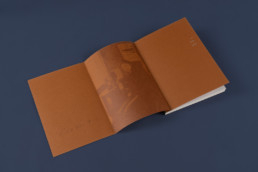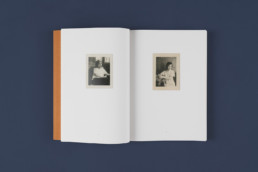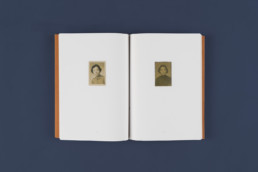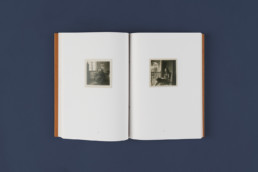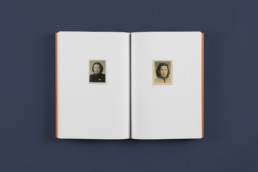- Photographs and text: Cai Dongdong
- Design: Zhen SHI, Yinhe Cheng
- ISBN : 978-2-9564071-9-5
- Publication date: November 2022
- Limited edition of 500 copies
- Softcover with embossing and foil stamping,
Traditional Chinese binding - 16.5 x 22 x 2.3 cm, 144 pages
Left, Right - Cai Dongdong
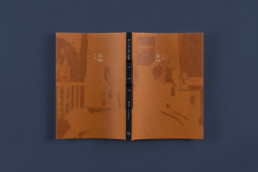
Left, Right, as its title suggests, is a book that may be read from left to right or from right to left, giving it a mirrored structure.
Among approximately 600,000 anonymous photographs in his collection, artist Cai Dongdong catalogs them according to the period, the costume and makeup of the subjects, and notes written on the backs of the photos. Then he compares them in the left and right design as he pairs up these women portraits of similar age, facial structure, and posture from two different historical periods, specifically before and after the founding of the People’s Republic of China. On the right-hand page are photographs taken during the Republic of China between 1912 and 1949, while those on the left-hand page are taken between 1949 and 1978, from the founding of the People’s Republic of China to the time of reform and opening up.
Cai Dongdong’s works have long been anchored in images, yet they cannot be simply defined as photography: he has always been skillfully navigating between « taking photos » and « making photos »; in addition to adopting existing materials for his own purposes, he creates and constructs new image narratives on top of them. In this creating process, his destruction, deconstruction, and integration of ready-made elements often allow the image itself to break through its two-dimensional plane and point directly to the contradictions and ambiguities hidden in its own language.
The 69 pairs and 138 photographs of Chinese women were once drifting in private spaces, away from the story of power. They are like two streams of a river flowing and intersecting, continuously stimulating polyphonic and intertextual conversations, together advancing the narratives of two different periods while striving to lay the stone for a folk history through images.


